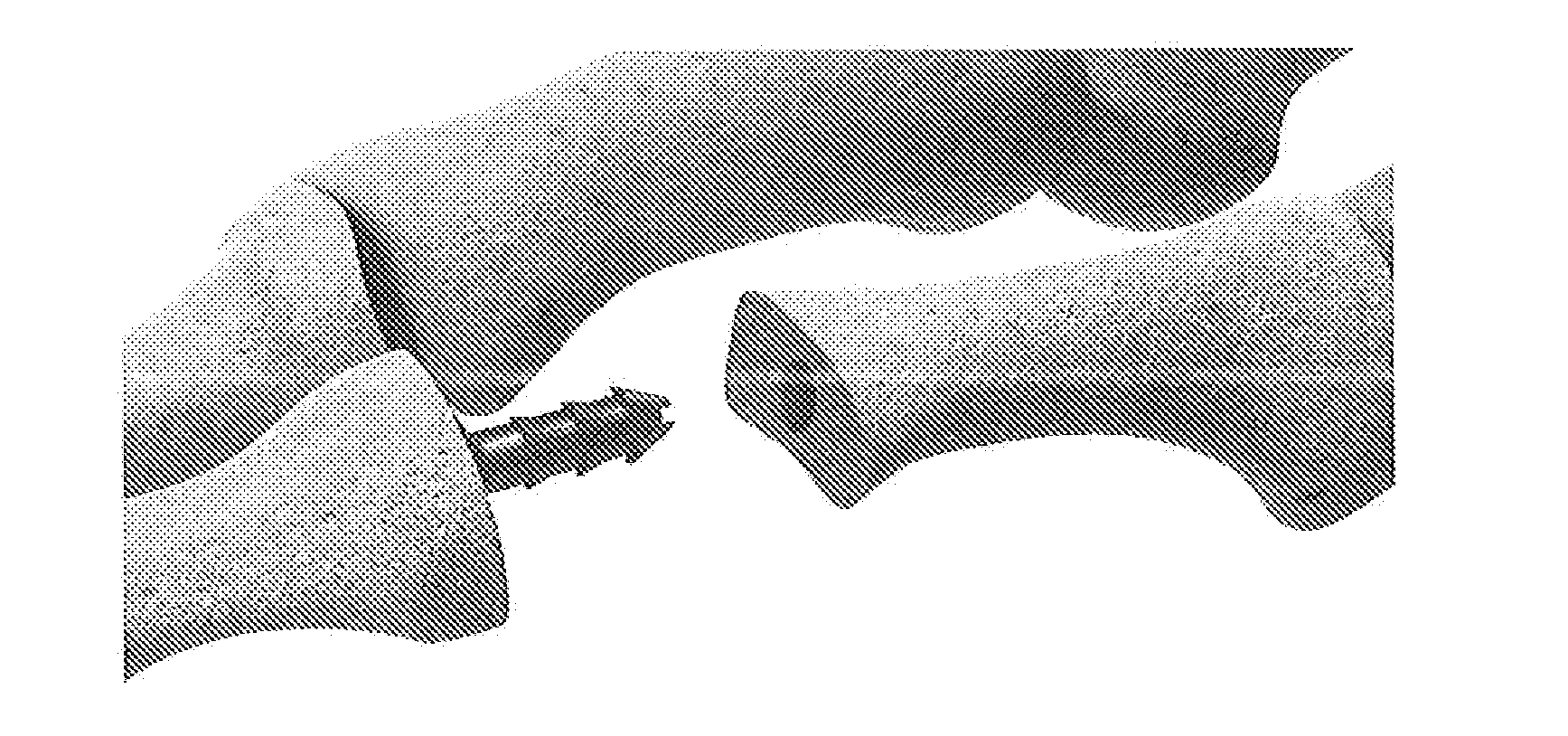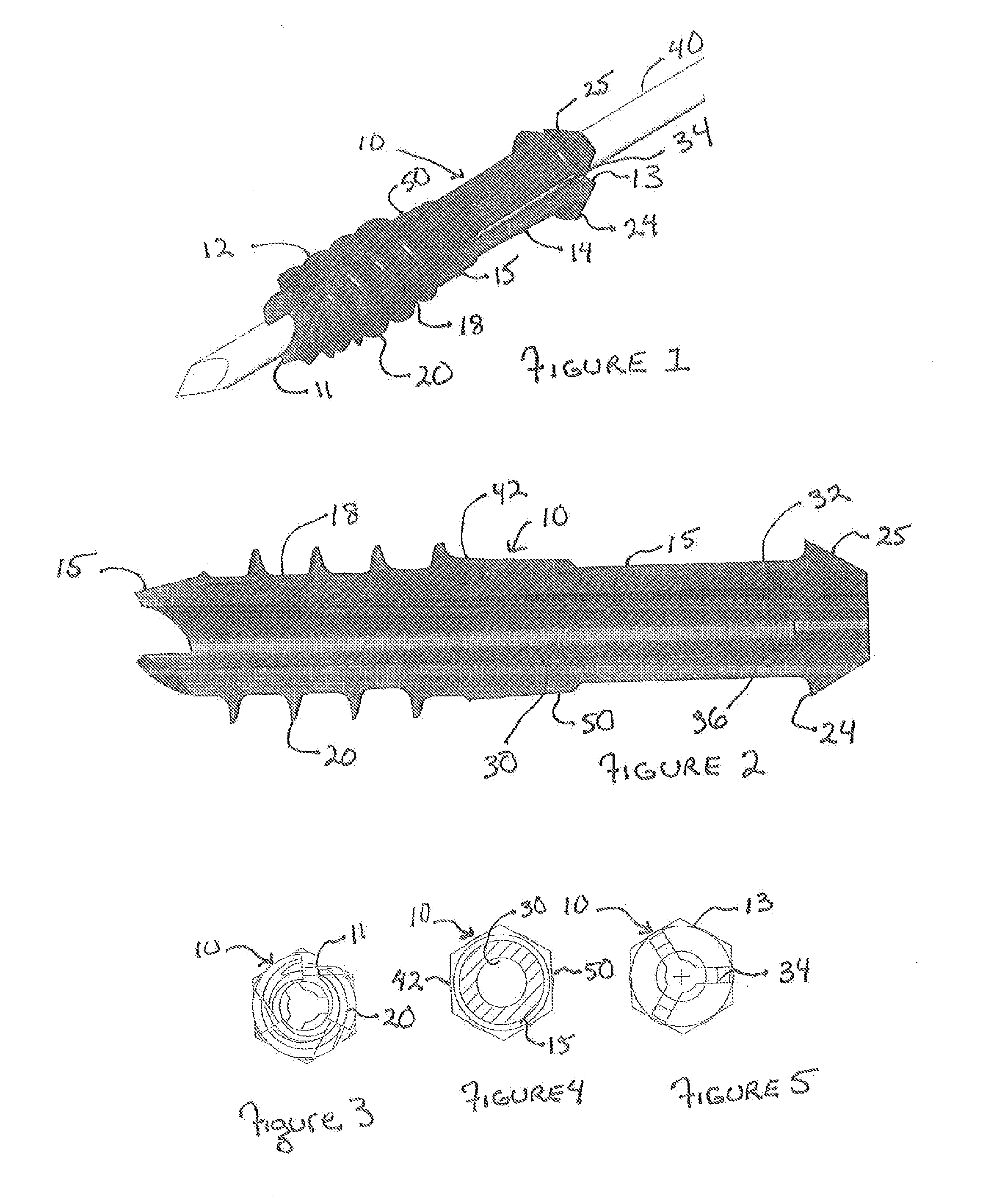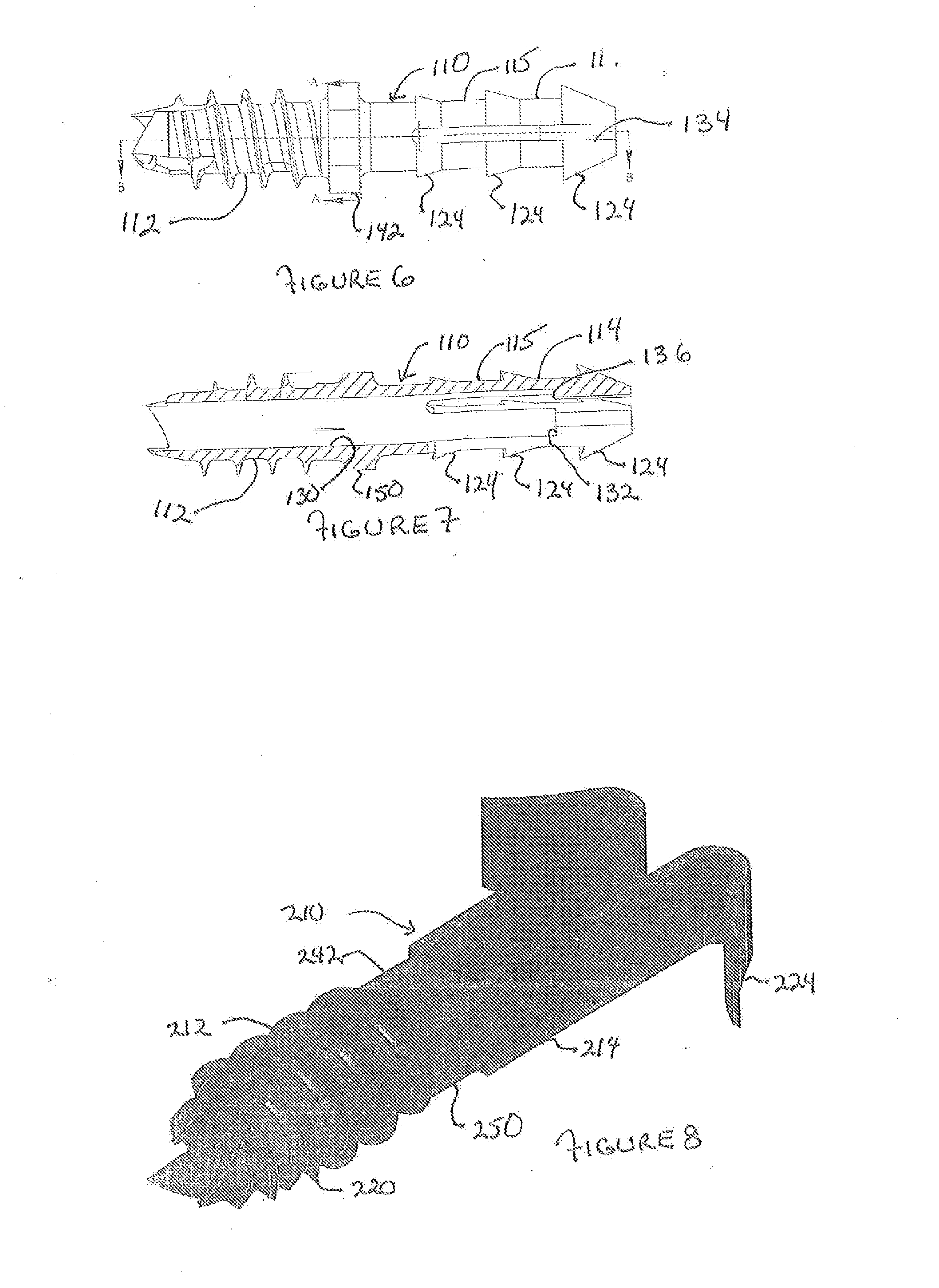Hammertoe implant
a technology of hammertoes and implants, applied in the field of general cylindrical intramedullary implants, can solve the problems of hammertoes accompanied by painful corns and callouses, muscle imbalance, and patients with digital deformities that often experience significant pain,
- Summary
- Abstract
- Description
- Claims
- Application Information
AI Technical Summary
Benefits of technology
Problems solved by technology
Method used
Image
Examples
second embodiment
[0033]The second end section of the invention 14 includes anchoring means, and more specifically barbs or ratchets 24 extending away from a cylindrical base 23 having a minor diameter of 0.07 inch, where the barbs can include one or more conical sections 25 joined by a edge to the base to form a sharp edge 26 and the conical sections having a length along the longitudinal axis of from about 0.03 to about 0.08 inch. The conical sections include side extending surfaces which preferably form a radial and / or longitudinal portion of a cone or a geometrical construct that expands radially like a cone but is constructed of flat surfaces. In the embodiment of the invention illustrated in FIGS. 6 and 7, the implant 110 includes a second end section 114 having three barbed sections 124 of increasing size, having a length in a first barb section of 0.07 inch and a diameter of 0.126 inch for the larger implant (a length of 0.05 and a diameter of about 0.08 for the small implant and a length of ...
third embodiment
[0034]FIG. 8 illustrates the implant of the invention 210 having a first end section 212 with threads 220 and a second end section 214 with flexible anchoring wings 224 that act to anchor the implant in the smaller pre-drilled hole in the second section of bone. The purpose of the barbed section of the implant is to define a relationship with a second bone segment so that the anchoring members 24 (124,224) expand and lodge within the second section of bone.
[0035]Further, the implant 10 (110, 210) optionally includes a cannulation 30 (130) aligned with the longitudinal axis (i.e. co-axial therewith) coupled with expansion means 32 (132) which permit the second end section 14 (114) of implant 10 (110) to expand radially. In the embodiment shown in FIGS. 1-5, for example, the expansion means comprises the conical sections 24 described above and the second end section 14 further has one or more, and preferably two or more radially spaced expansion slots 34 which run parallel to the long...
first embodiment
[0036]Preferably, the implant 10 (110, 210) also includes a collar 50 (150, 250) having a length of about 0.050+ / −0.005 inch intermediate to the first end section 12 and the second end section 14 which includes one or more, (and preferably from about 3 to about 8) radially flat exterior surfaces 42 (142, 242) to allow the first end section to be screwed into a first bone section. Advantageously, this collar defines a hexagonal torque-driving surface. The implant is made from a suitable biocompatible material, for example, such as medical grade stainless, titanium or titanium alloy, nitinol, ceramic or PEEK or similar implantable polymeric material. Optionally, the guide wire may include means to avoid infection, such as an antimicrobial treatment and / or a cap at the wound site.
[0037]FIGS. 13-15 illustrate a third embodiment of the invention in which the implant 310 includes the threaded first section 312 joined to the barbed second section 314 but in which the second section 314 is ...
PUM
 Login to View More
Login to View More Abstract
Description
Claims
Application Information
 Login to View More
Login to View More - R&D
- Intellectual Property
- Life Sciences
- Materials
- Tech Scout
- Unparalleled Data Quality
- Higher Quality Content
- 60% Fewer Hallucinations
Browse by: Latest US Patents, China's latest patents, Technical Efficacy Thesaurus, Application Domain, Technology Topic, Popular Technical Reports.
© 2025 PatSnap. All rights reserved.Legal|Privacy policy|Modern Slavery Act Transparency Statement|Sitemap|About US| Contact US: help@patsnap.com



